Determine the magnitude of frictional force and acceleration of the block in each of the following cases :

Case (i)

Here (driving force ) is greater than maximum friction .Hence , the block will not be able to stay at rest if will accelerate downwards but where it starts slipping then kinetic friction will come into play. Now
So, in this case and (downward)
Case(ii)

Here is graeter than (driving force) Hence block will not move so in this case
case III

Here driving force is apwards Driving force is more than so the block will accelerate upward
(upward)
So in this case, and (upwards)
Topper's Solved these Questions
- NEWTON'S LAWS OF MOTION 2BOOK - CENGAGE PHYSICS ENGLISHCHAPTER - NEWTON'S LAWS OF MOTION 2EXERCISE - Solved Examples
12 Videos
- NEWTON'S LAWS OF MOTION 2BOOK - CENGAGE PHYSICS ENGLISHCHAPTER - NEWTON'S LAWS OF MOTION 2EXERCISE - Exercise 7.1
25 Videos
- NEWTON'S LAWS OF MOTION 1BOOK - CENGAGE PHYSICS ENGLISHCHAPTER - NEWTON'S LAWS OF MOTION 1EXERCISE - Integer
5 Videos
- PROPERTIES OF SOLIDS AND FLUIDSBOOK - CENGAGE PHYSICS ENGLISHCHAPTER - PROPERTIES OF SOLIDS AND FLUIDSEXERCISE - INTEGER_TYPE
2 Videos
Similar Questions
The frictional force acting on 1 kg block is

View SolutionThe magnitud of difference in accelerations of blocks of mass m in . Both the cases shown below is

View SolutionAssertion: Magnitude of the contact force is always greater than the magnitude of frictional force.
Reason: Contact force is the resultant of the friction force and normal reaction.
View SolutionA block of mass 5 kg is kept on a rough horizontal surface. The coefficient of friction for the contact force block and surface are μs=0⋅1andμk=0⋅9 respectively . A horizontal force F given by F 0⋅5t is applied at t = 0 . Here t represent time in seconds . Determine the force of friction and acceleration of the block at
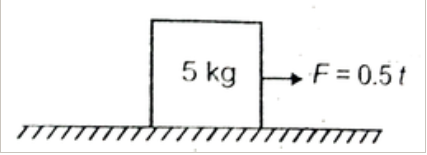
(i) t = 1s (ii) t= 10 s (iii) t = 12 s
View Solution34.The magnitude of acceleration of blocks of mass
View SolutionA block B is pulled by a force of 18 N applied to a light pulley as shown in the figure. If the coefficient of friction is 0.4 and the acceleration of the block is 0.5 ms−2 , the mass of the block is (g=10m/s2)

View SolutionIn the three figure shown, find acceleration of block and force of friction on it in each case.
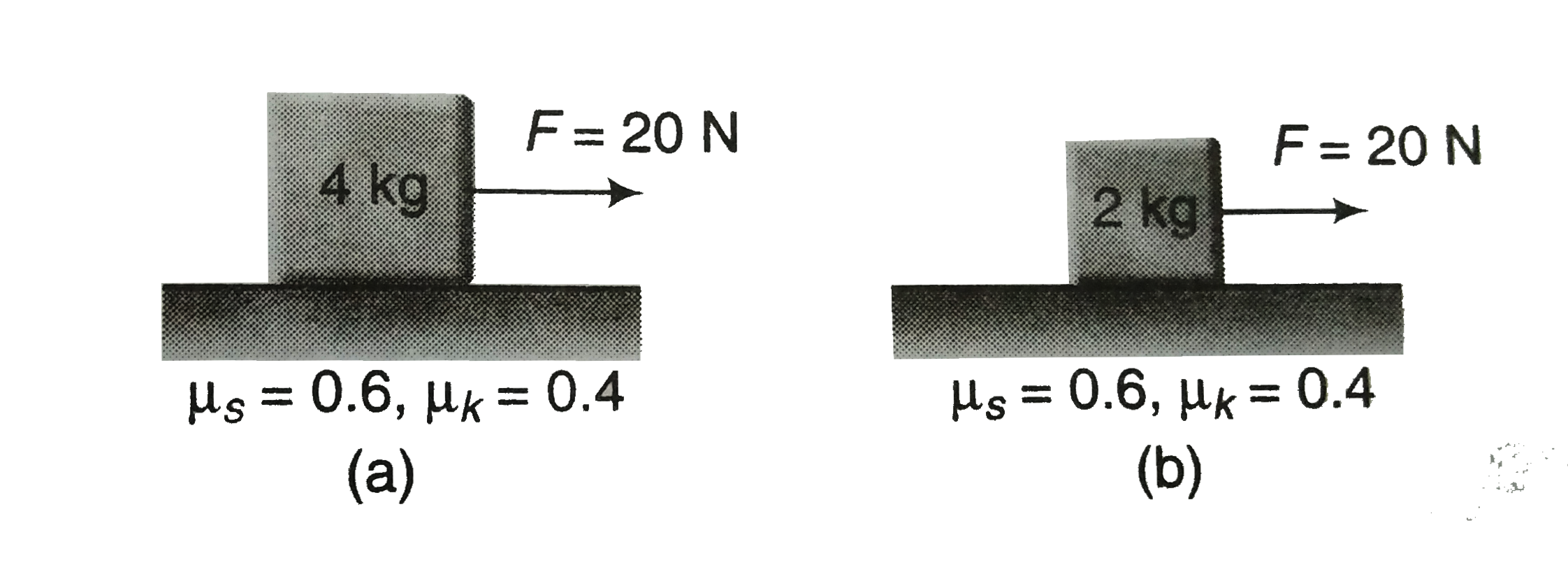
View Solution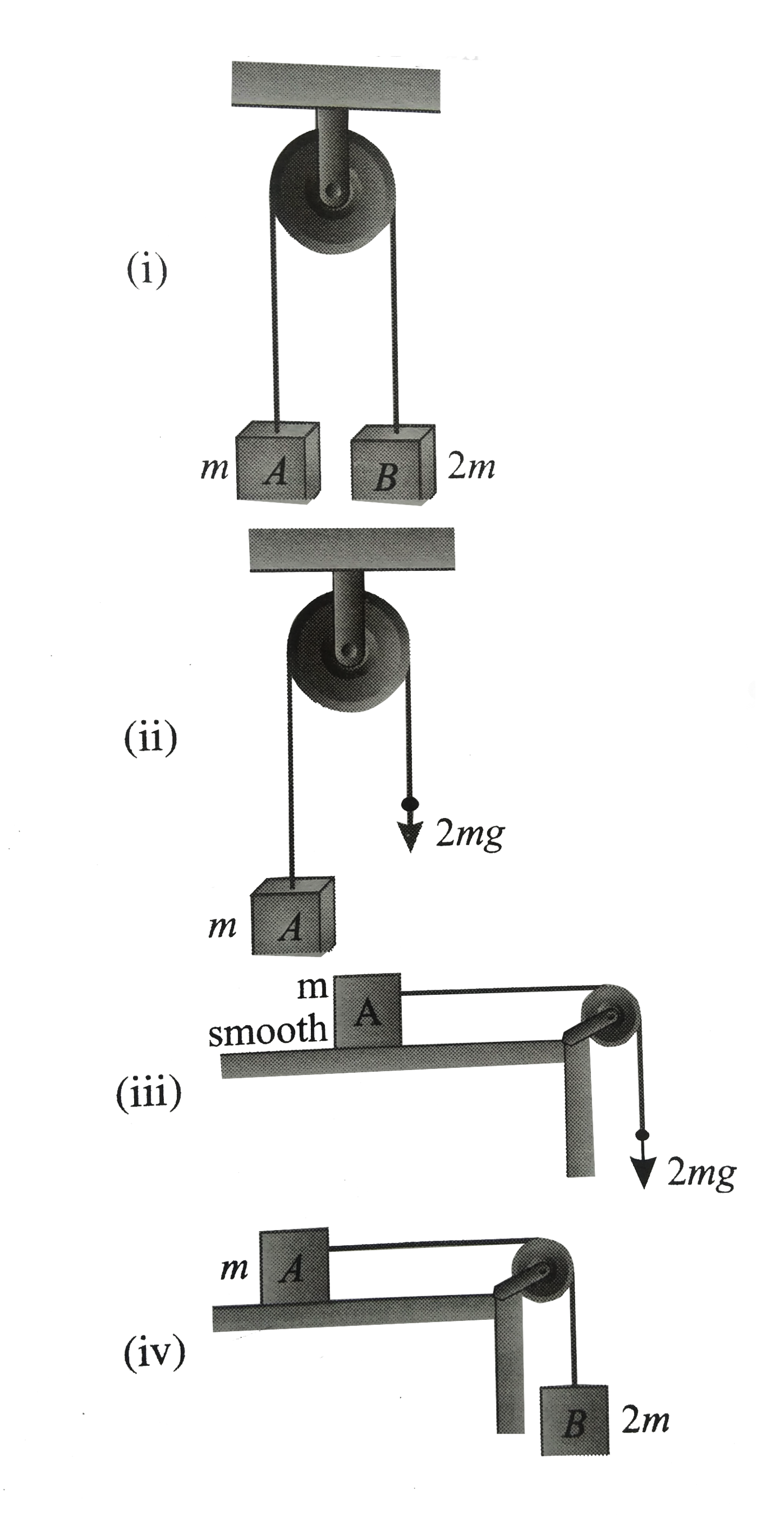 In which of the following cases the magnitude of acceleration of the block A will be maximum (neglecting friction, mass of pulley and string)
In which of the following cases the magnitude of acceleration of the block A will be maximum (neglecting friction, mass of pulley and string)
View Solution In which of the following cases the magnitude of acceleration of the block A will be maximum (neglecting friction, mass of pulley and string)
In which of the following cases the magnitude of acceleration of the block A will be maximum (neglecting friction, mass of pulley and string)
View SolutionCalculate the acceleration of block A and B in cases (a),(b), and (c ).
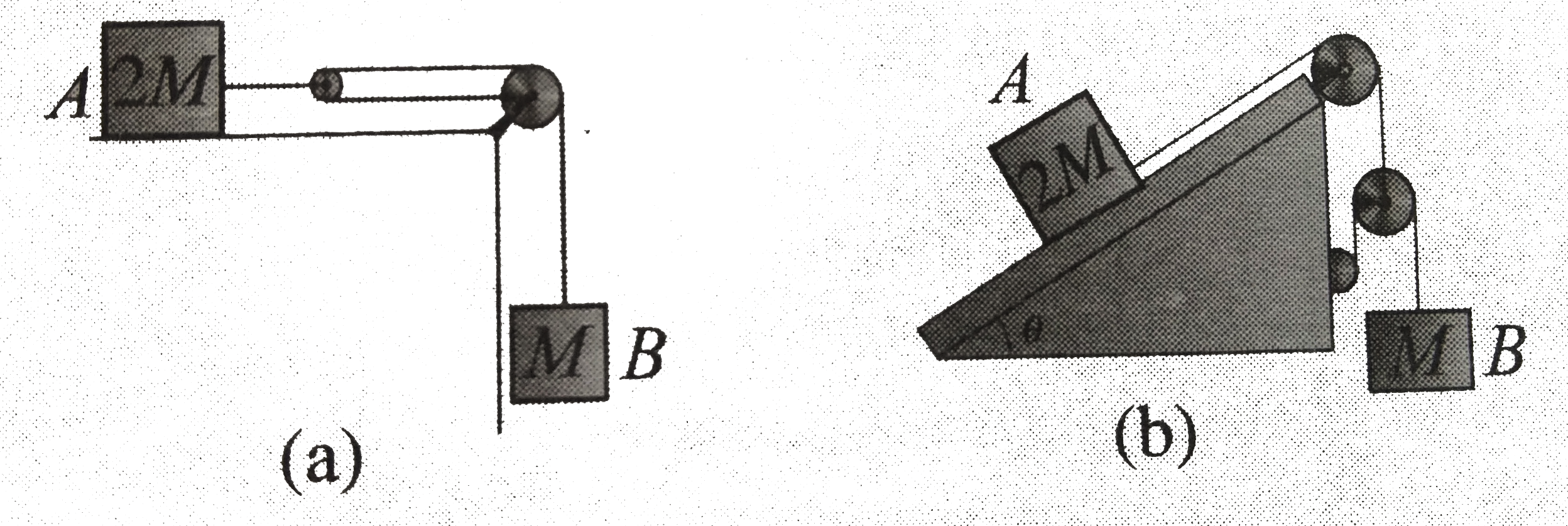
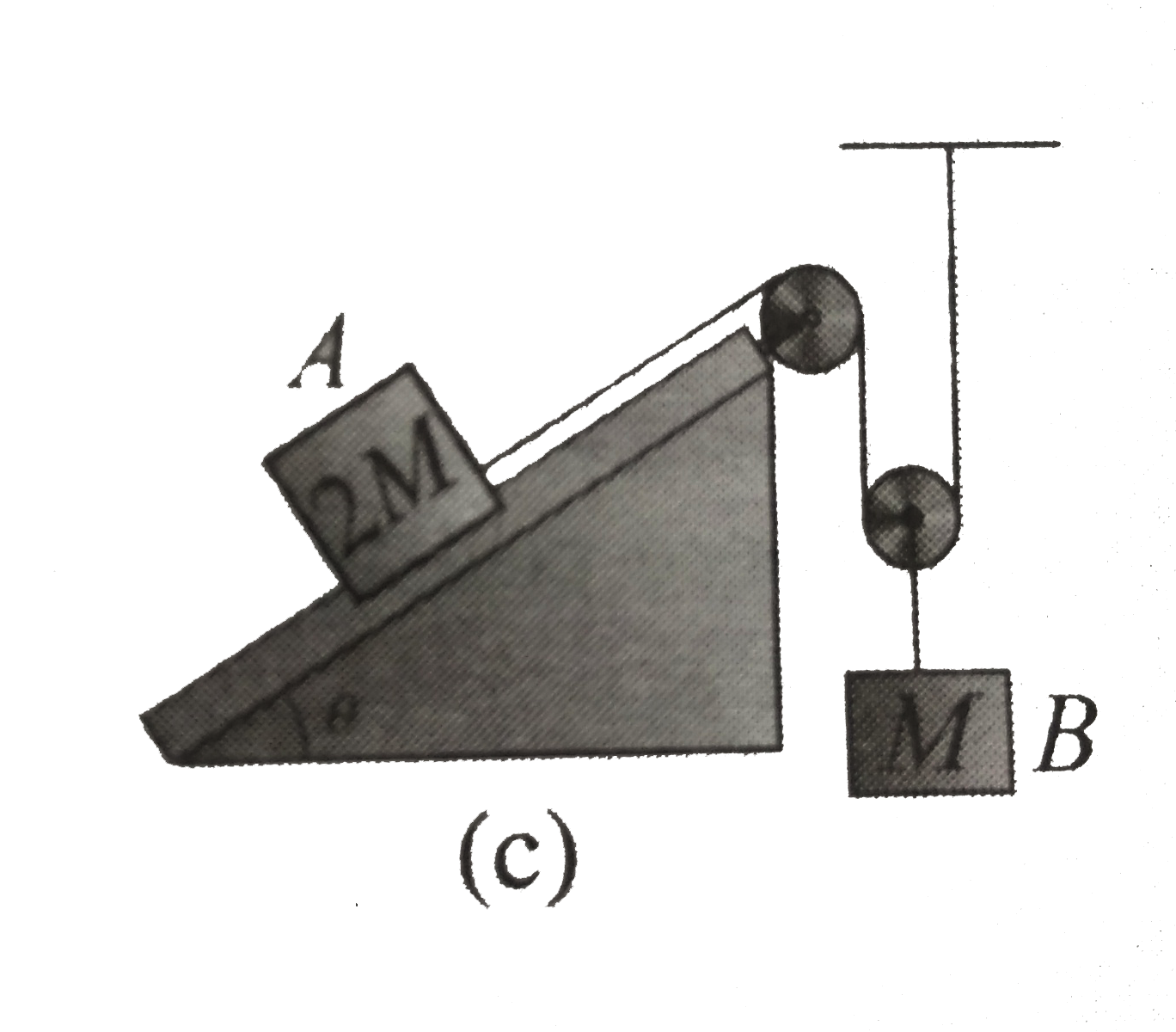

View Solution
